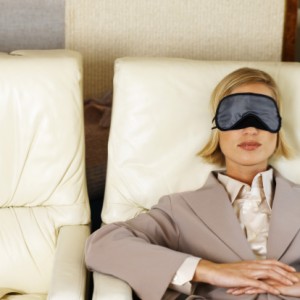 Jet lag is an annoyance and even a health issue for anyone who flies across multiple time zones. For frequent flyers, such as on-the-go business executives, jet lag is more than a nuisance. It can have significant detrimental effects on well-being and productivity.
Jet lag is an annoyance and even a health issue for anyone who flies across multiple time zones. For frequent flyers, such as on-the-go business executives, jet lag is more than a nuisance. It can have significant detrimental effects on well-being and productivity.
Three environmental features of an aircraft cabin aggravate jet lag: lighting, air pressure, and air quality, especially humidity. Fortunately, aircraft owners or buyers can make changes to the cabin’s interior that mitigate jet lag or look for aircraft with these specific features.
Lighting
Flying across multiple time zones can wreak havoc with the body’s internal clock. A traveler leaving Auckland, New Zealand, at 7 p.m. and arriving in Denver at 6:30 p.m. on the same day will have an internal clock that is far out of sync with the destination time zone. This is because cross-time zone travel disrupts the normal 24-hour light and dark cycle, as well as the fact that the traveler’s internal clock takes several days to sync with a new time zone.
Although you can’t eliminate time zone differences, you can modify cabin lighting to help reduce jet lag. One solution is to install an LED lighting system with a programmable zonal day-and-night mood-lighting capability. Make sure lighting complements the interior design and provides acceptable brightness, and that lighting transitions are gradual.
Air pressure
An aircraft’s environmental control system (ECS) regulates air quality and cabin pressure. A lower-pressure environment is typically more comfortable for passengers — for example, it increases their oxygen intake and can help avoid intestinal gas symptoms common in pressurized cabins.
Aircraft cabins are pressurized to a pressure that is lower than sea level — at their maximum altitude, aircraft are generally pressurized to 8,000 feet. However, a number of private jet models, such as the Gulfstream G500 and G650 and Boeing BBJ models, feature lower cabin pressurization, which in turn can mitigate jet lag symptoms by helping passengers breathe easier and feel more energized in flight.
Humidity
Dry eyes and throat are often an unpleasant part of travelers’ flying experience, but lower humidity also contributes to fatigue and lowered immune function, and can even be dangerous for passengers with respiratory concerns. Private jets tend to have the lowest humidity — typically less than 5% — because they have fewer passengers (the main contributor to cabin humidity). Dry cabin air also contributes to dehydration, aggravating jet lag.
The solution? Retrofit your aircraft cabin with a humidification system, such as CAIR Humidification from CTT Systems. This system boosts in-cabin relative humidity to 20%, helping to stave off the effects of dry filtered air.
Regular travelers frequently face jet lag, which threatens their well-being and productivity. Fortunately, the right cabin interior modifications can combat jet lag and help you arrive refreshed and ready for whatever your destination may bring.
Contact L & L International if you need assistance in purchasing or selling a private jet.You can reach our sales specialists today at sales@L-Lint.com, call us any time at +1.305.754.3313, or visit us online.